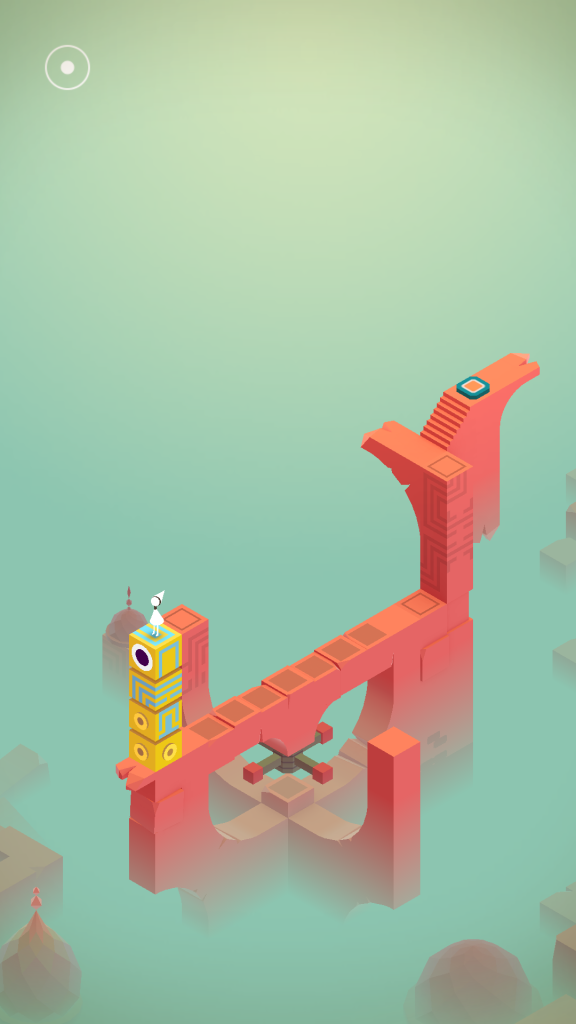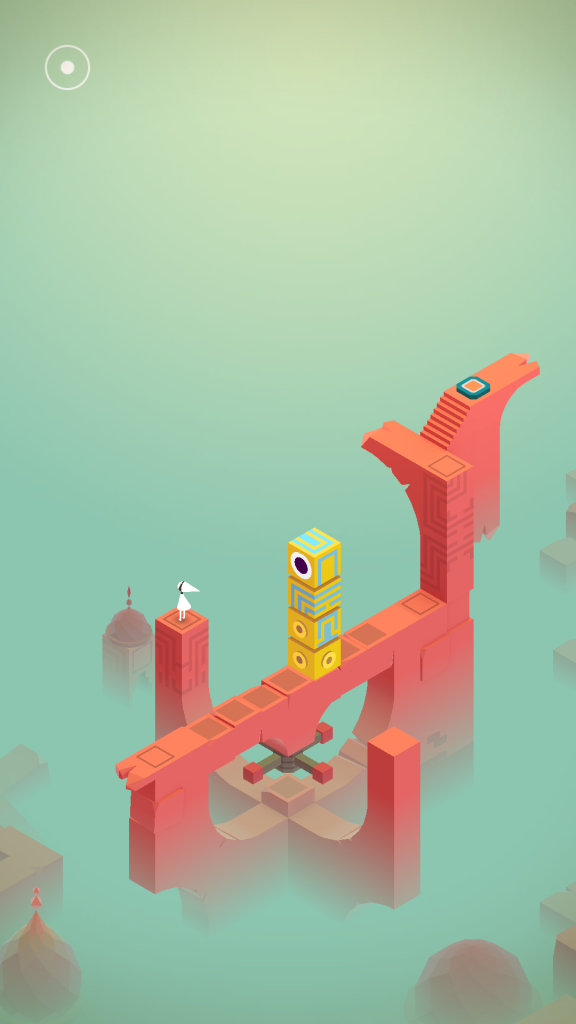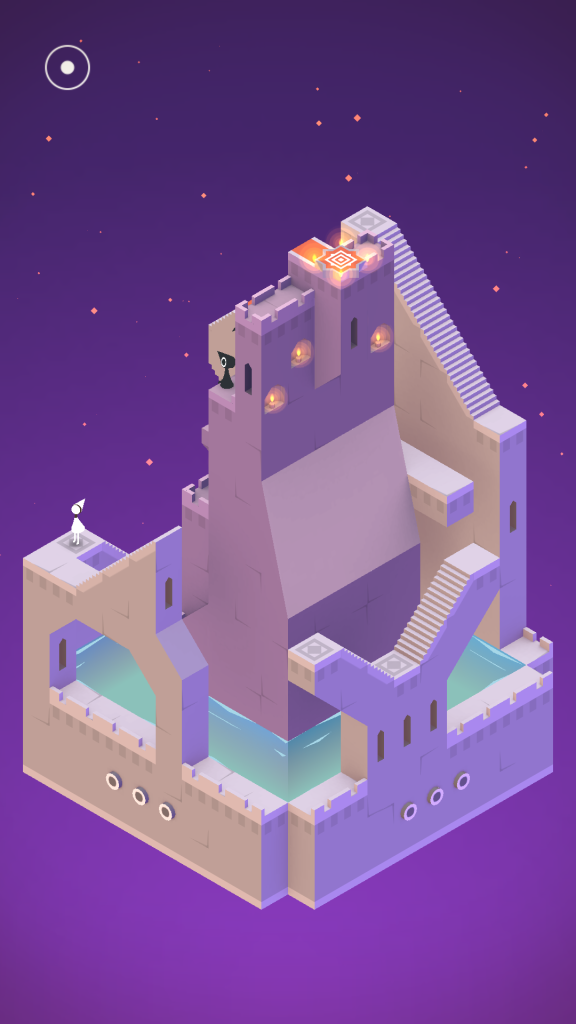Mobile Gaming.
Domain of the Filthy Casual.
Disruptor of Communication.
Emptier of Wallets by use of micro-transactions.
Yeah, no. I didn’t do those. However, I did try some games available on Android, and I shall talk about them for your convenience.
Spoilers, of course, but minor ones.
Monument Valley: A puzzle game utilizing impossible geometry in a three-dimensional space, critically acclaimed.
Let’s start with the looks of it. I personally like the rather minimalistic art style. Bright colours in front of non-distracting backgrounds. The sound effects get very repetitive very soon, especially if one starts to throw all patience over board to get done with the respective level.
Controls are simple: tap to move main character, tap-and-drag to move basically everything else. Solid.
There is a story, and it works very well – I wont go there as it might just as well be absent. It frames the gameplay.
What really sets this puzzle game apart is the design of the puzzles and where they come from. As I said before, the puzzles rely on impossible geometry and the manipulation of said geometry in a three-dimensional framework. “But how”, one might ask, “how can something like the endless staircase be used in a 3D-space? It only works because it’s a picture!”. And damn right would one be. Therefore, allow me to illustrate this with some screenshots:  Princess Ida, standing on her friend Totem, can walk from where she stands to the adjacent red floor tile. Makes sense, doesn’t it?
Princess Ida, standing on her friend Totem, can walk from where she stands to the adjacent red floor tile. Makes sense, doesn’t it? Then we grab the wheel, turn the bridge by 90°, and now she can walk over it on the other side. But wait, there’s more:
Then we grab the wheel, turn the bridge by 90°, and now she can walk over it on the other side. But wait, there’s more: We can also send Totem down the way. Here he can’t be reached by Ida anymore, as his top no longer aligns with her position.
We can also send Totem down the way. Here he can’t be reached by Ida anymore, as his top no longer aligns with her position.
There are also maps where the structure itself can be turned to connect pathways:
 Ida stands on the same square in both pictures.
Ida stands on the same square in both pictures.
My opinion on Monument Valley? Great idea, well realized, but far to easy. YMMV, but given the fact that most levels have only a few ways to manipulate them, arriving at the correct solution didn’t pose much of a problem. The single hardest level was one at the end of the game, where Ida moves along the edges of a wireframe-cube and has to reach three different doors. And even that could have been harder. Again, your mileage may vary.
Also, this game is short. 10 levels, with a (first?) additional map pack available as an in-game purchase. I’m not saying Monument Valley isn’t worth the asking price (it totally is), just be aware that it is a) short and b) not particularly challenging. If you enjoy impossible geometry and want something for short bursts of fun, this is your game.
Time of Exploration: a free-to-play text-based resource management game. That’s basically all there is to say about it.
One builds buildings to produce resources, builds other buildings to produce products, builds more buildings which consume said products and tries to reach one of the three endgame-buildings (whose individual difficulty ) as fast as possible. There’s a high score.
Yep, that’s it.
And I like it. It scratches a very specific itch. It allows me to check every few hours to do something, to tweak and optimize my strategy, without demanding to be accessed every 15 minutes or pestering me with micro transactions.
So, if you like resource management games, go grab Time of Exploration. I wholeheartedly recommend it, and it’s free.
I’d like to finish with a question: are there mobile games you, dear reader, can recommend? I have a little list of paid titles I will probably get one at a time, but especially if you can recommend a good, micropayment-free (in terms of progress) city-(or something-)builder, please do tell me.
